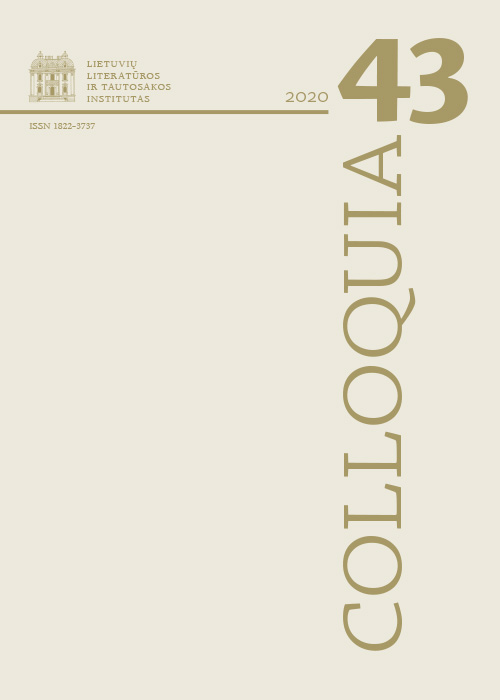Vinco Krėvės agonas
Santrauka
Straipsnyje analizuojamos agono formos ir reikšmės Vinco Krėvės dramaturgijoje (Šarūnas, Skirgaila) ir novelistikoje (Šiaudinėj pastogėj, Raganius). Aptariama, jog Krėvės kūryboje dėmesys agono situacijoms ir agoninėms laikysenoms – varžymuisi, ginčui, nesutarimui, nesantaikai, konfliktams – neatsiejamas nuo modernaus sąmoningumo elemento: svarstomos kūrybiškumo ir destrukcijos ryšio problemos. Chronologiškai ankstesnėje dramaturgijoje Krėvė šią problemą kėlė aktualiu meno ir politikos galios santykių aspektu, išryškindamas destruktyvius agono aspektus, o novelistikoje ieškojo lietuvių tradicinei kultūrai būdingo pozityvaus agono modelio. Ši problematikos linija, jungianti stilistiškai skirtingus Krėvės kūrinius, leidžia įžvelgti jo kūrybai būdingą kultūrinės kritikos nuostatą, galimai nukreiptą į XX a. I pusės socialinę-politinę tikrovę.
Atsisiuntimai
Skaitomiausi šio autoriaus(ų) straipsniai
- Brigita Speičytė, Istorija aristokratės akiratyje: Sofijos Tyzenhauzaitės de Šuazel-Gufjė istoriniai romanai , Colloquia: T 45 (2020)
- Brigita Speičytė, Ustronės atsiskyrėlio Broliai bajorai, arba Atminties lygmenys (Stanislovas Moravskis, Iš visur po truputį, t. 2: Broliai bajorai: Atsiskyrėlio gavenda) , Colloquia: T 38 (2017)
- Brigita Speičytė, Literatūra kryžkelėje (Beata Kalęba, Rozdroże: Literatura polska w kręgu litewskiego odrodzenia narodowego) , Colloquia: T 39 (2017)
